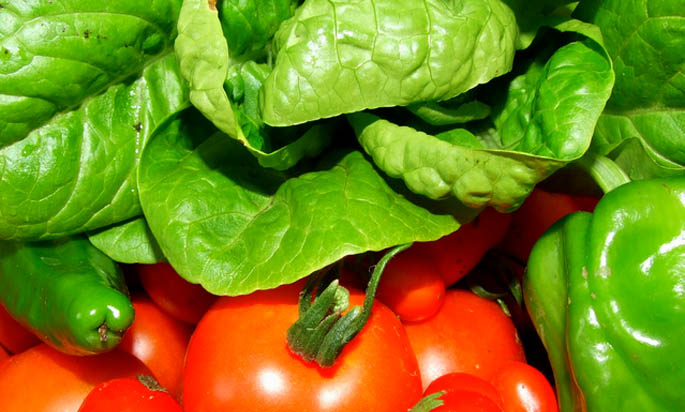Understanding Our Food Reality: The Hidden Challenges of Modern Agriculture in the United States

In an age of convenience and mass production, the food reality in the United States presents unique challenges to our health and well-being. Our agricultural practices and food production methods have evolved significantly, often prioritizing quantity and profit over quality and nutrient density. This shift has profound implications for our dietary health, with many consumers unwittingly affected by the changes.
Depletion of Soil and Nutrient Deficiency
Modern farming practices, driven by the demand for high yields, have taken a toll on the quality of our soil. Intensive monoculture farming, excessive use of chemical fertilizers, and pesticides have stripped the soil of its natural nutrients. Healthy soil is a critical source of the vitamins and minerals that should be present in our food. However, as the quality of soil diminishes, so does the nutritional content of the crops it produces, leading to food that is often devoid of essential nutrients necessary for sustaining health.
The Rise of Engineered and Genetically Modified Foods
A significant portion of products found in grocery stores today is engineered or genetically modified, designed to resist pests, improve shelf life, or increase yield. While these developments might address some agricultural challenges, they often come at a cost. Genetically modified organisms (GMOs) are controversial and have sparked debates about their long-term effects on human health and the environment. Many people are concerned about the potential risks associated with consuming GMOs and their impact on biodiversity.
Toxic Ingredients in Processed Foods
The demand for long-lasting and convenient food products has led to the widespread use of artificial preservatives, colorings, and flavorings in processed foods. These substances serve to extend shelf life, enhance appearance, and improve taste, but they come with hidden dangers. Long-term consumption of such additives can have detrimental effects on health, contributing to chronic illnesses like obesity, diabetes, and cardiovascular diseases. These processed options are often devoid of life force energy—the essential vitality necessary for optimal health and wellness.
The Impact on Health and Wellness
As our diet increasingly consists of processed and nutrient-poor foods, the repercussions on our health become more pronounced. Poor nutrition can weaken the immune system, reduce energy levels, harm gut vitality, and contribute to the development of chronic diseases. It is crucial to recognize that the life force energy inherent in natural, whole foods is indispensable in sustaining overall health and vitality.
The Most Toxic Ingredients Found in Packaged Foods in the US
When it comes to packaged foods in the United States, several ingredients frequently raise concerns due to their potential health risks. Here are some of the most toxic ingredients commonly found in processed foods:
- High-Fructose Corn Syrup (HFCS): A sweetener derived from corn, HFCS is linked to obesity, diabetes, and metabolic disorders due to its high sugar content and impact on insulin resistance.
- Artificial Sweeteners (e.g., Aspartame, Saccharin, Sucralose): Used to reduce calories in “diet” or “sugar-free” products, these sweeteners may contribute to metabolic issues and have potential links to cancer and other health concerns.
- Monosodium Glutamate (MSG): A flavor enhancer found in many savory foods, MSG can trigger adverse reactions in sensitive individuals, such as headaches and nausea.
- Trans Fats: Found in partially hydrogenated oils, trans fats are used to extend shelf life but have been strongly linked to heart disease, raising bad cholesterol and lowering good cholesterol levels.
- Artificial Colors (e.g., Red 40, Yellow 5, Blue 1): These synthetic dyes can cause allergic reactions and have been associated with behavioral issues in children, such as hyperactivity.
- Sodium Nitrate and Sodium Nitrite: Preservatives used in processed meats to enhance color and prevent spoilage, they are linked to an increased risk of heart disease and certain types of cancer.
- Butylated Hydroxyanisole (BHA) and Butylated Hydroxytoluene (BHT): Preservatives found in various packaged foods, these chemicals are suspected of being carcinogens and may cause hormonal disruptions.
- Propyl Gallate: Another preservative used to prevent oxidation, propyl gallate is linked to potential carcinogenic effects.
- Potassium Bromate: Used to improve dough elasticity in breads, potassium bromate is considered a potential carcinogen and is banned in many countries outside the US.
- Sodium Benzoate: A preservative found in acidic foods and drinks, sodium benzoate may form benzene, a known carcinogen, when combined with vitamin C.
- Carrageenan: Used as a thickener and stabilizer, carrageenan can cause digestive issues and inflammation in the gut.
Being aware of these ingredients can help you make healthier choices and select products that prioritize natural, less processed components. Reading labels carefully and opting for whole, minimally processed foods is a proactive step towards better health.
Moving Forward: Prioritizing Nutrient-Dense, Wholesome Foods
To navigate our modern food reality, making informed choices and prioritizing nutrient-dense, whole foods is essential. Supporting sustainable and regenerative farming practices, which focus on restoring soil health and ecosystem balance, can play a crucial role in overcoming these challenges. Whenever possible, choose organic and non-GMO produce, seek out local farmers’ markets, and prioritize fresh, minimally processed foods to ensure a diet rich in life force energy.
Where to Find Healthier Food
Finding healthier food ingredients starts with knowing where to shop and what to look for. Here are some excellent places to buy nutritious ingredients:
- Local Farmers’ Markets: Farmers’ markets offer fresh, seasonal produce directly from local growers, often organic or grown with sustainable practices. They provide a great selection of fruits, vegetables, herbs, and sometimes meats and dairy.
- Health Food Stores: Stores like Whole Foods, Sprouts, and Trader Joe’s specialize in organic and health-conscious products. They often have a wide selection of gluten-free, non-GMO, and other healthy options.
- Online Retailers:
- Thrive Market: An online membership-based market that offers healthy food and natural products at discounted prices. They have a broad selection of organic, non-GMO, gluten-free, and vegan options.
- Amazon: With their expansive selection of health-conscious brands, you can find organic, gluten-free, and specialty diet ingredients.
- Co-ops and Bulk Food Stores: Look for food cooperatives or bulk stores where you can buy organic grains, nuts, seeds, and other staples in bulk, reducing packaging waste and often saving money.
- Community Supported Agriculture (CSA): Subscribing to a CSA allows you to receive a weekly box of fresh produce and sometimes other local goods directly from farmers.
- Ethnic Markets: These markets can offer a range of fresh fruits, vegetables, spices, and whole grains that are often used in traditional and healthier cooking styles. They may offer whole, minimally processed ingredients you won’t find in regular grocery stores.
- Grocery Store Health Sections: Most large grocery chains have health food sections offering organic, whole, and allergy-friendly foods. Stores like Kroger, Safeway, and Publix often have these dedicated sections.
By seeking out these venues, you can ensure that your ingredients are fresh, high-quality, and health-promoting, supporting overall well-being and sustainable eating habits.
Make Conscious informed choices
The landscape of our food system is complex, with factors that significantly influence the nutritional quality of the food we consume daily. By understanding these challenges and making conscious, informed choices, we can advocate for a more sustainable and health-focused food system. Embracing these changes not only supports individual well-being but also contributes to a healthier planet for future generations.








Share Your Thoughts